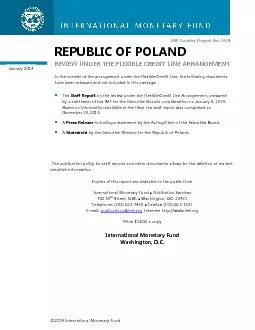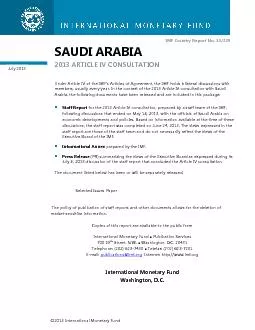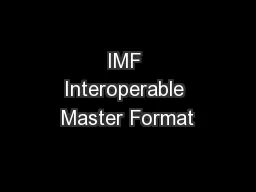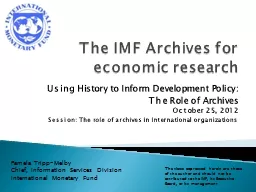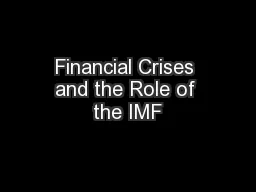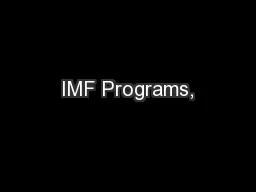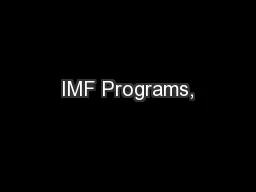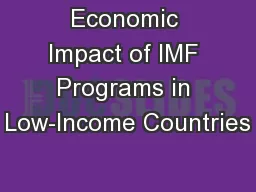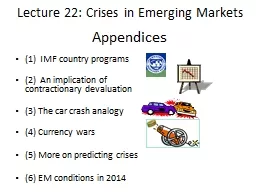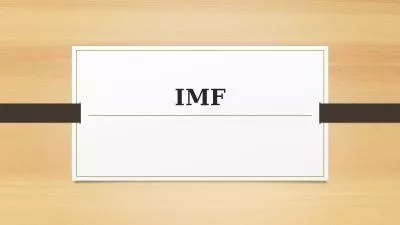PDF-IMF Country Report No. 14/8 In the context of the arrangement under t
Author : jane-oiler | Published Date : 2015-09-27
Internet httpwwwimforg Price 1800 a copy International Monetary Fund Washington DC January 2014 REPUBLIC OF POLAND REVIEW UNDER THE FLEXIBLE CREDIT LINE ARRANGEMENT
Presentation Embed Code
Download Presentation
Download Presentation The PPT/PDF document "IMF Country Report No. 14/8 In the cont..." is the property of its rightful owner. Permission is granted to download and print the materials on this website for personal, non-commercial use only, and to display it on your personal computer provided you do not modify the materials and that you retain all copyright notices contained in the materials. By downloading content from our website, you accept the terms of this agreement.
IMF Country Report No. 14/8 In the context of the arrangement under t: Transcript
Download Rules Of Document
"IMF Country Report No. 14/8 In the context of the arrangement under t"The content belongs to its owner. You may download and print it for personal use, without modification, and keep all copyright notices. By downloading, you agree to these terms.
Related Documents

